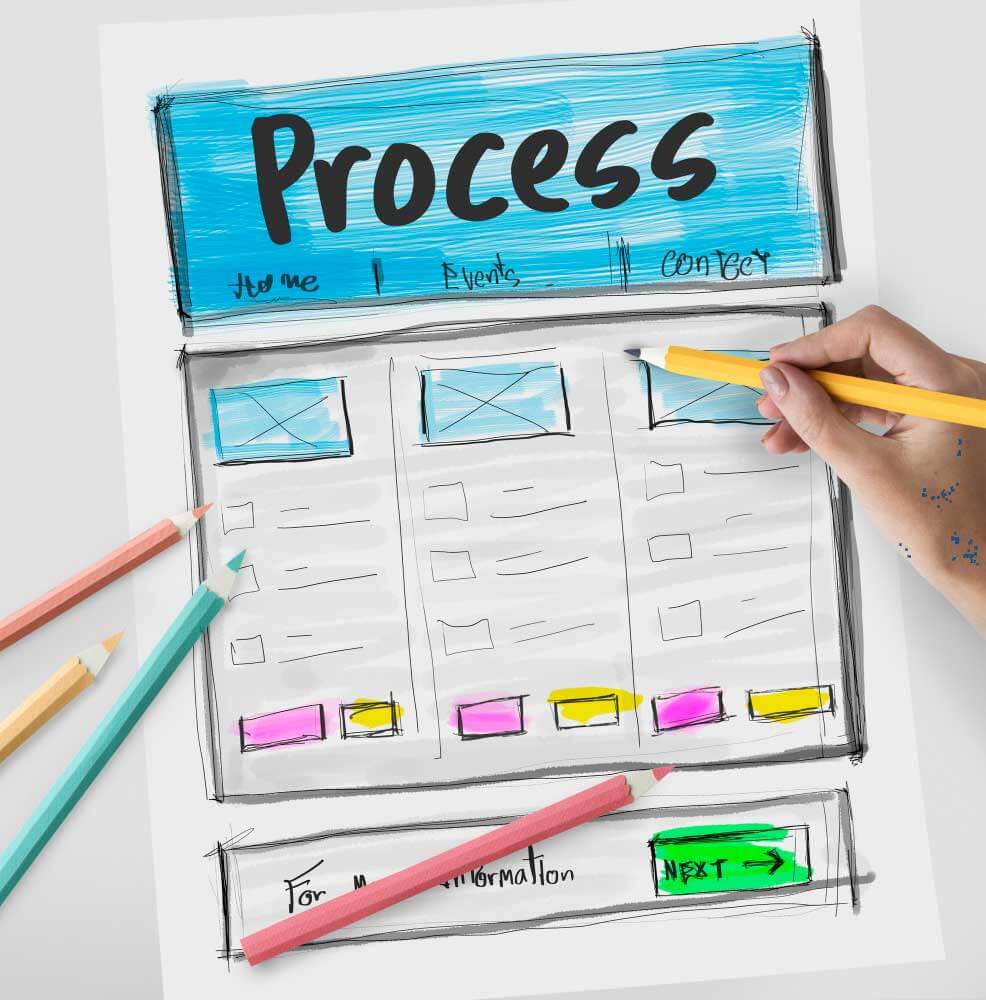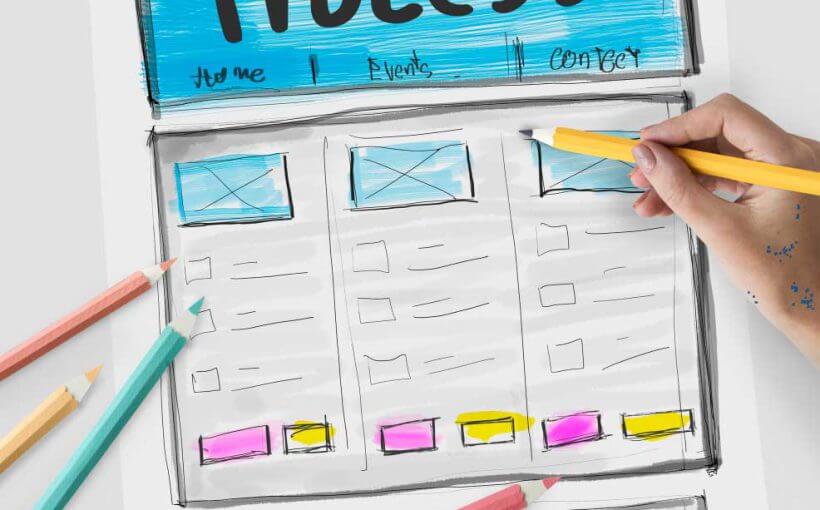 Landing pages are hard to design because of the pressure. You know that every word is working for or against you. You know that visitors will make up their minds in nano seconds of whether or not to stay on your page and read it.
Landing pages are hard to design because of the pressure. You know that every word is working for or against you. You know that visitors will make up their minds in nano seconds of whether or not to stay on your page and read it.
And you know that getting those visitors to take the desired action feels like trying to convince total strangers to hand you their information and even their wallet because, well, that’s what’s actually happening.
For the average marketer, creating a landing page can be scarier than buying your first home. Get it right and you could be earning a fortune. Get it wrong and you’re wasting your time while looking like a completely clueless idiot who should got get a job flipping burgers.
The reason designing landing pages seems so difficult is because you understand the stakes involved. If you were a total newbie who thought any old page would do, then you would simply slap something up and wonder why it never converted a single soul.
But you know how important this is, which is why you need to have a plan in place to create the highest converting landing page possible, whether you’re building a list or selling a product.
In the interest of reducing your stress and improving your results, here is an 11.5 point landing page framework you can use to create an effective landing page every single time.
Above the Fold
The ‘above the fold’ section of your page is that portion a visitor can see without scrolling. This is the area that will create the first impression that determines if your visitors stay on the page to read it, or if they leave.
Here’s what to include above the fold:
1: Your Irresistible Offer or Big Idea
This is the headline that tells people why they need to pay attention to your page, rather than clicking away.
What are you going to do for them? Why should they care?
This isn’t the time to talk about you or your product. Rather, let the visitor know what they stand to gain by reading further.
Remember that your offer needs to be clear, not clever.
“Awesomeness is better than a duck’s down” is going to confuse people, while…
“Get your best night’s sleep every night” is easy to understand.
2: Prove It
You can write anything in the headline spot, but if you can’t back it up then it won’t do much good.
Your social proof could be testimonials from customers, an expert’s review, the number of customers you have or the number of 5 star reviews you’ve received so far.
Social proof tells people what others are saying about you, rather than what you say about yourself.
3: Demonstrate Credibility
While proof is what others say about you, credibility is what qualifies you to be the expert.
What makes you qualified to deliver on your promise? Experience? Education? The number of people you’ve helped? The years you’ve been doing this? The results you’ve achieved? Find a way to succinctly make it perfectly clear that you are THE person for this task.
4: Call to Action
The is the final item you must squeeze above the fold. Some of your visitors will be ready to immediately take the action you seek, whether that’s to join your list, get your free trial or purchase your low-priced product. For these folks you need a call to action to appear above the fold so they don’t need to scroll to find it.
And for the rest of your visitors who aren’t yet ready to take action, seeing the CTA button helps them to understand what is expected of them and eliminate any confusion early on.
NOTE: If you’re selling a product for more than a few dollars, I don’t recommend having a call to action at the top of the page. People will click it because they are curious but they’re not yet ready to buy. They get to the order form and because they’re not ready, they click away. Not good. What’s the cutoff point? In my opinion it’s anything less than $10 where the price is the major selling point, such as, “Today Only – The #1 WordPress template for just $10!”
Above or Below the Fold
Most of the rest of this list will be found below the fold simply because there is not enough room above the fold to accommodate all of these items.
5: Transformation
People want to be transformed and your product is going to help them get there.
Show the results of using your product or service. For example, if you offer retirement counseling then you’re going to show people in their 50’s having the time of their lives without a financial care in the world.
You are not going to show them pouring over their finances or consulting with accountants, because this is the vehicle that gets them to where they want to go and not the actual result they are seeking.
If they want to lose weight, you’re going to show before and after shots of people transformed by your program. Don’t show plates of broccoli or people exercising because again this is the vehicle to get them to the destination and you want to show the result, not the journey.
6: Benefits
You knew these had to come in somewhere, right? Benefits go hand in hand with transformation and they’re often written as curiosity-building bullet points.
For example…
- Inside you’ll discover the effortless and stress-free method to gaining 100’s of new customers every single week.
- This course will reveal how to get more done in one hour than you’re currently finishing in 3 days.
- First time revealed; the 5 secrets to getting any woman – no matter how hot – to want to date you within 60 seconds of meeting you.
7: Features
First you give them the benefits, then you tell them about the features. If this sounds backwards, realize that no one is interested in features until they know what’s in it for them.
Features make the benefits seem possible. If you’re going to tell your prospect that they’ll leave the other cars in the dust as they catapult from 0- to 60 in one second, then you better also tell them about the engine that makes it all possible.
8: Overcome Objections
People will have doubts and objections about whatever you are selling them.
If you want them on your mailing list, they’re going to wonder if you will sell their information to others or if it will be impossible to unsubscribe. Explain that you never, ever share your list and that unsubscribing takes one click.
If you want them to buy your product, they’re going to wonder if there is a better alternative or something cheaper. Here’s where you nip those objections the bud.
Common objections are:
- This won’t work
- It’s too expensive
- I don’t believe you
- I’ve tried something like this before
- This is too hard or takes too long
- This might be low quality
Find out your most common objections and handle them or they will handle you by losing you the subscriber or sale.
9: More Social Proof
Social proof at the beginning and then again at the end can cement the sale. The bottom of your page can be a great place to put testimonials – as in, ALL your best testimonials. Including a ton of social proof will tip people off the fence and into subscribing or purchasing.
Essentially you want undeniable proof that comes from a ton of different people.
10: Guarantee
Just before or after your second call to action, you want to have a guarantee that removes most or all of the risk for your customer.
If you are simply asking them to join your mailing list, then a simple guarantee of, “Join Our 22,000 subscribers and we guarantee you will discover more about our topic than you could almost anywhere else, and you’ll do it for free!”
If you are asking them to sign up for a free trial, guarantee they will love it or they pay nothing.
And if you are asking them to make a purchase, guarantee they will love it or they will get a full, fast and easy refund, no questions asked.
11: Second Call to Action
A great call to action will nudge people into doing what you want, whether it’s signing up or purchasing.
Use your call to action to restate the major promise, such as: “Yes, I want to Quadruple My Traffic in 30 Days!”
Or, “Yes, I Want to Date Super-Hot Women!”
Or, “Yes, I want to lose 20 pounds in 20 days!”
Don’t use your call-to-action button color anywhere on the page other than on the CTA button.
And tell people what happens after they take action. For example, if they are joining your list, you might write, “After you sign up, check your inbox for the free book.”
11.5: FAQ’s
This one is optional and is going to depend on your offer and how you’ve presented it. Ideally, all questions should have already been answered before the reader gets to the bottom of the page.
But some people are scrollers and will scroll to the bottom to see how long the page is and to read the major points. If you restate your major points in the FAQ, then this can be a way to convey the vital information to scrollers as well as reiterate it to the people who read most or all of the page.
Don’t make your FAQ too long – 3 to 5 questions is good. If you want to save space and make it look neat, make each question clickable so the answer appears underneath the question when it is clicked. This also helps to get the reader clicking, smoothing the way to getting them to click the call-to-action button.
If you do use an FAQ, you might want to add a third CTA button underneath the FAQ.
One last thing: Your landing page should be congruous with the page, email or ad that brought them to your page. Ideally you will use the same headline and the same look, font, phrasing and colors so they know they are in the right place.
One more last thing: Nothing beats testing. Especially test everything above the fold to find what works the best.
This may have sounded like a lot, but the length of the page is totally up to you. Obviously if you’re creating a sales page for a free trial or an inexpensive product, then you’re going to have to write more than if you’re simply selling them on joining your list.
The beauty of these 11.5 items is that the next time you create a landing page, you’ll have a list to turn to that will guide you each step of the way and ensure that you leave no critical element out.
And just because there are eleven point five items, it doesn’t mean your page has to be long. Some of these, such as the Irresistible Offer and the Guarantee can be covered in a single sentence.
Try creating a page using this system before the week is out. Send some traffic to it and see what happens.
I think you’ll be pleasantly shocked at just how effective this is.
